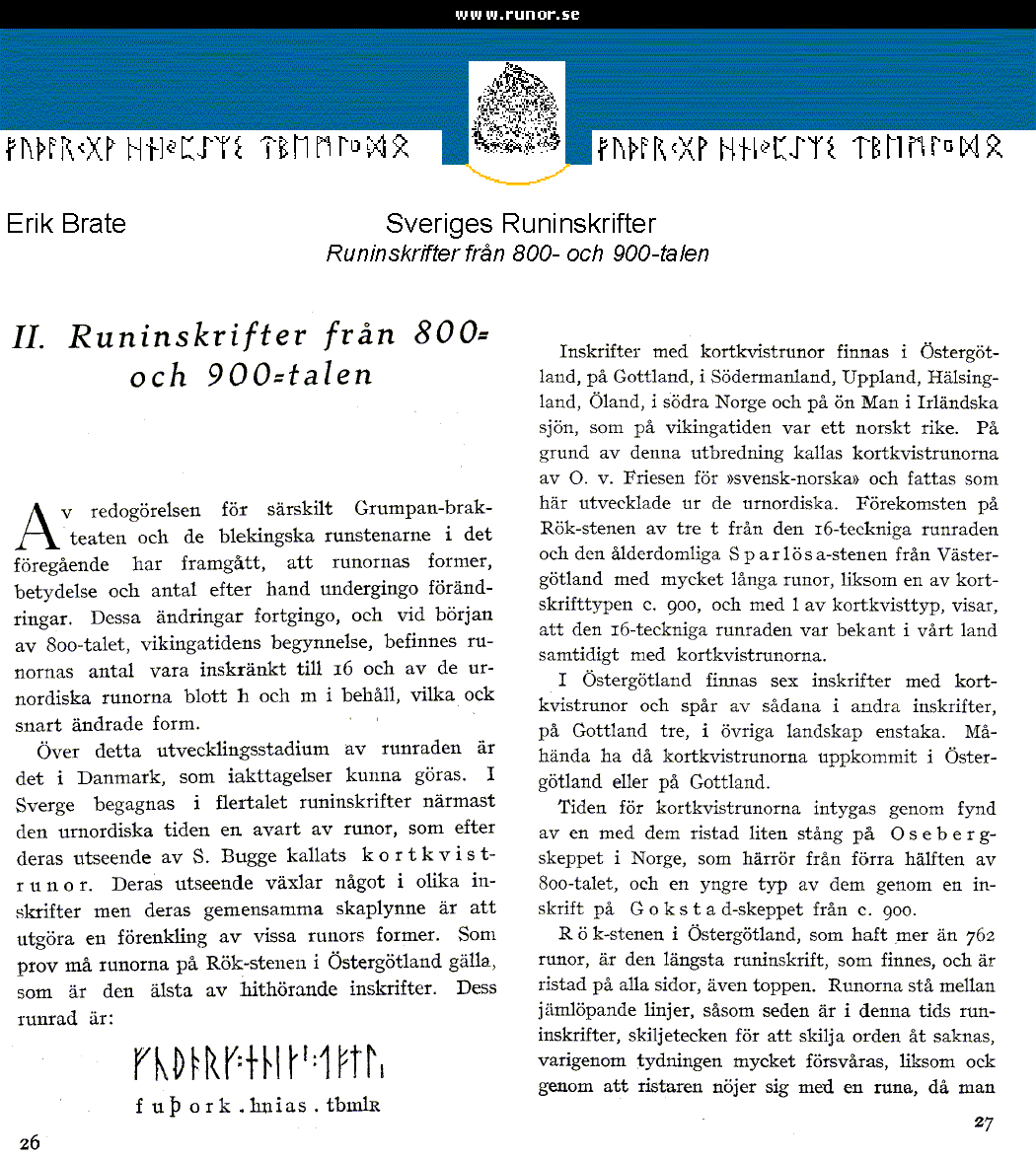
II. Runic inscriptions in the 9-10:th century
As shown in the statement of Grumpan-bracteate
and the Blekinge runic-stones in the preceding we have seen, that the forms of the runes,
their significance and the number gradually underwent changes.
These changes continued, and at the beginning of the 800s, when the Viking Age began,
number of runes is found to be limited to 16 and of the Primitive Norse runes persisted only h and m,
which also soon changed shape.
During this developmental stage of the runic alphabet, it is in Denmark, which
observations could be made. In Sweden, used in most runic inscriptions
closest to the Primitive Norse period a perversion of the runes,
as after their appearance by S. Bugge called short-twig runes.
Their appearance varies somewhat in different inscriptions, but their joint creation is to be
simplification of certain forms of runes.
As a test let the runes on the Rök-stone in Östergötland effect,
which is the oldest of the relevant inscriptions.
The runic alphabet is:
fuþork. hnias. tbmlR
Inscriptions on short twig runes found in Östergötland, the
Gotland, in Södermanland, Uppland, Gävleborg, Öland,
southern Norway and the Isle of Man in the Irish Sea,
where the Vikings had a Norwegian kingdom.
Because of this expansion the short-twig runes is called by
O. v. Friesen for "Swedish-Norwegian,"
and summarized that have developed out of the Primitive Norse .
The presence on the Rök-stone of the three "T" from the
16-characters runic alphabet and the archaic Sparlösa stone
from Västergötland with very long runes,
as well as a type of short written c. 900, and with one short-twig type,
showing that the 16-characters runic alphabet
was known in our country at the same time as short-twig runes.
In Östergötland, are there six inscriptions with short-twig runes,
and traces of such in other inscriptions, on Gotland three,
in other landscapes are few inscriptions.
Perhaps then, the short-twig runes raised in Östergötland or on Gotland.
The time for short-twig runes attested by finds of them carved with small bars
of the Oseberg-ship in Norway, from first half of the 800s,
and a younger type of them by an inscription on the Gokstad-ship from c 900th.
900.
The Rök-stone in Östergötland, which had more than 762 runes, is the longest inscription,
which exists, and is carved on all sides, including the top.
Runes stand between concurrent lines, as is the custom in this time Runestone,
punctuation to separate words to exist, whereby interpretations is much more difficult,
and also that the carver content with a rune when you